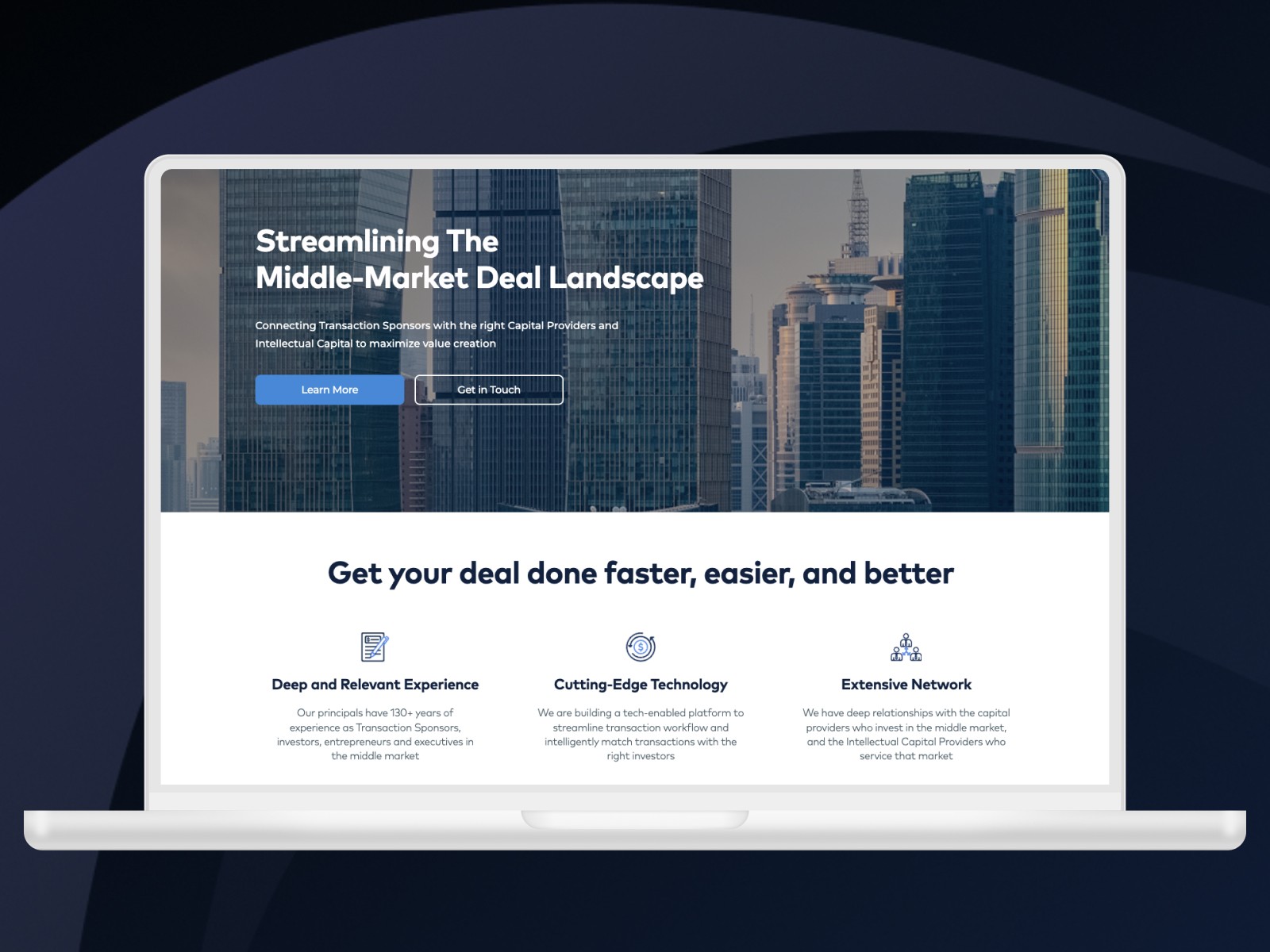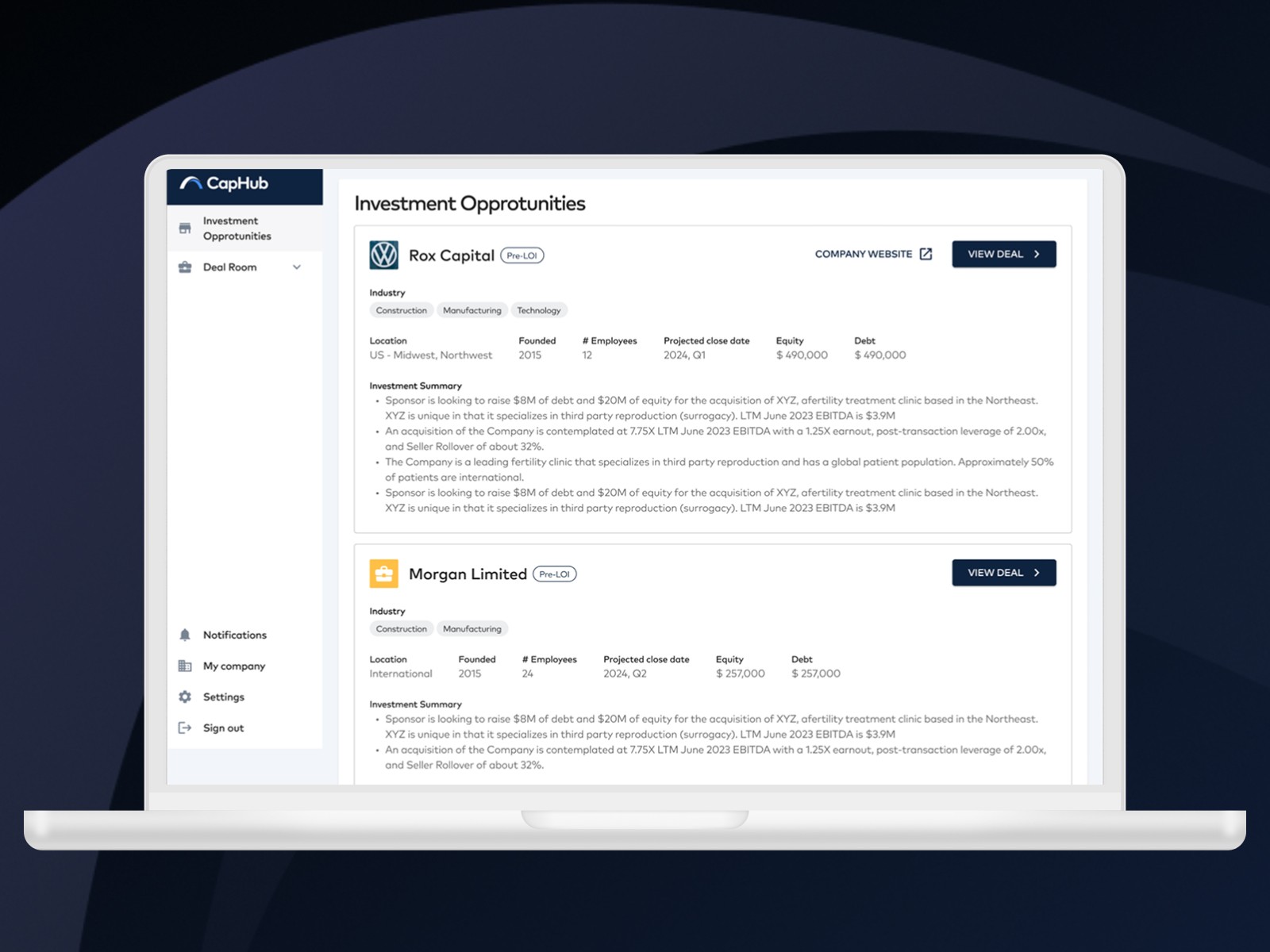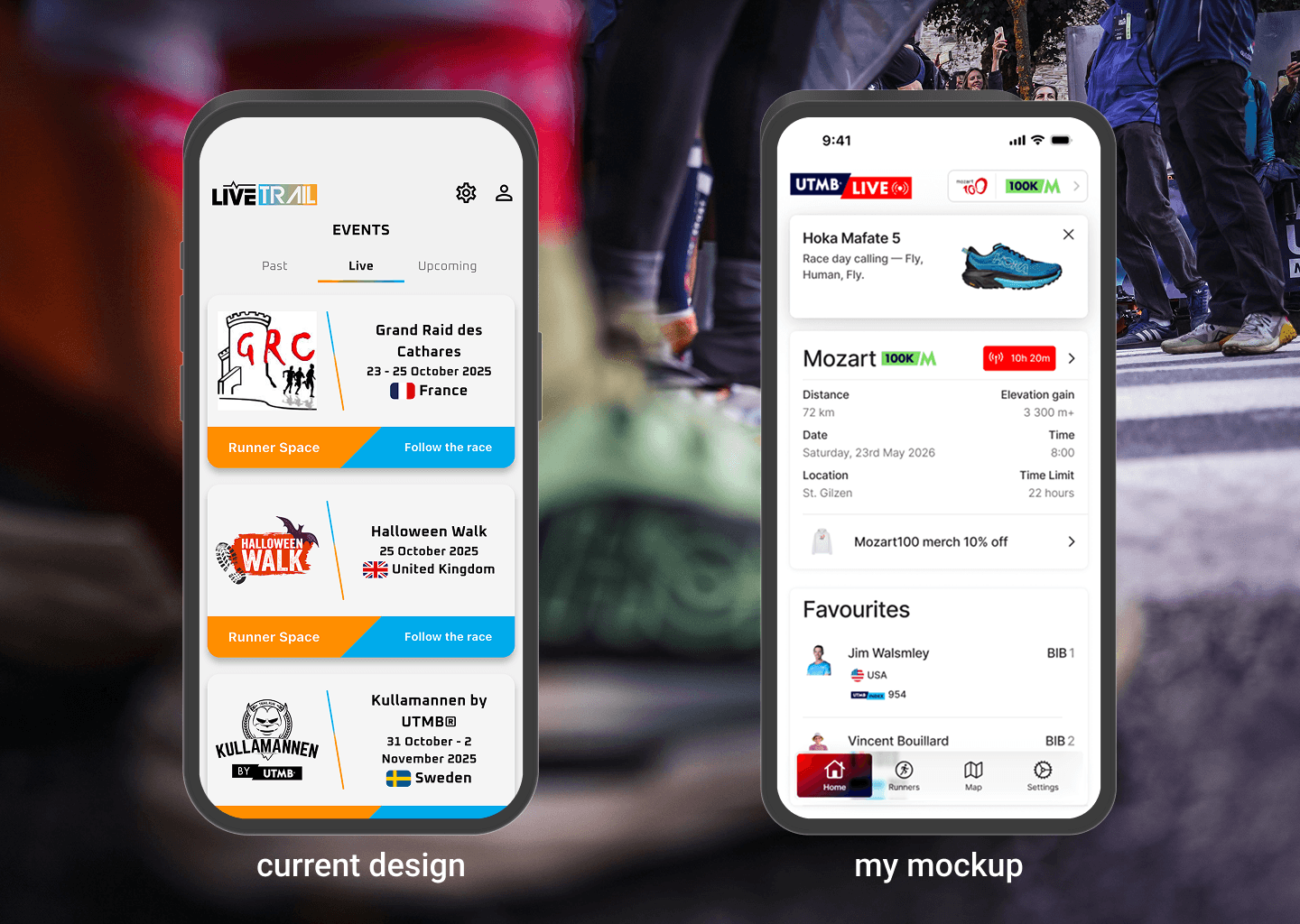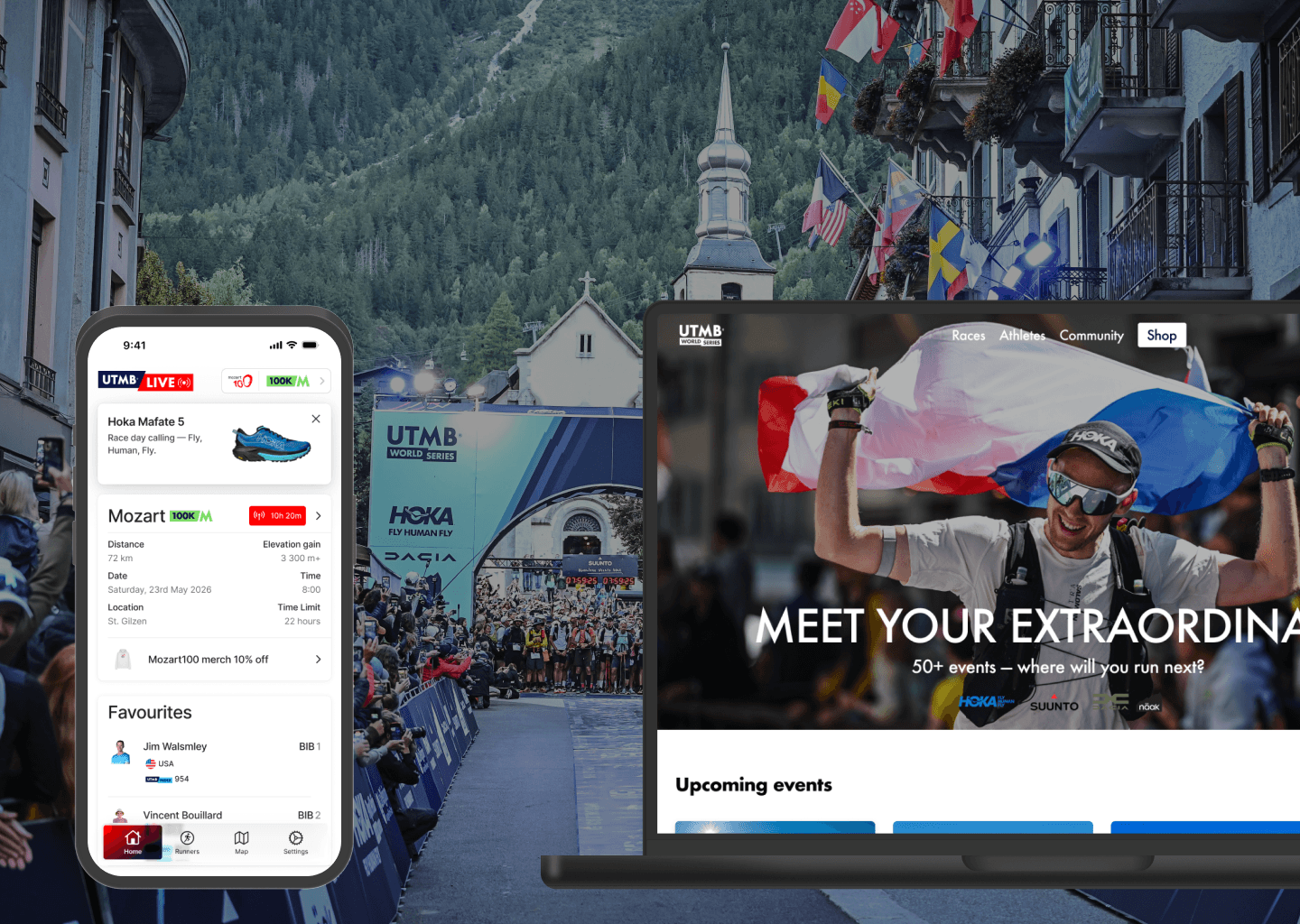KB+ Business
As the first designer on the project, I had the unique opportunity to shape the digital experience for the most critical business—responsible for over 60% of the group’s revenue. Project is still unannounced, so the images are blurred.
Services
Product Design, Strategy, Leadership, Mentoring, Product Discovery, UX Research, Prototyping & Wireframing, Design Systems
Services
Product Design, Strategy, Leadership, Mentoring, Product Discovery, UX Research, Prototyping & Wireframing, Design Systems
Services
Product Design, Strategy, Leadership, Mentoring, Product Discovery, UX Research, Prototyping & Wireframing, Design Systems
Tools
Figma, Sketch, UML, Miro, Jira, Confluence
Tools
Figma, Sketch, UML, Miro, Jira, Confluence
Tools
Figma, Sketch, UML, Miro, Jira, Confluence
Value
Scalable, Efficient, Flat architecture
Value
Scalable, Efficient, Flat architecture
Value
Scalable, Efficient, Flat architecture
Timeline
1 yeah 6 months
Timeline
1 yeah 6 months
Timeline
1 yeah 6 months
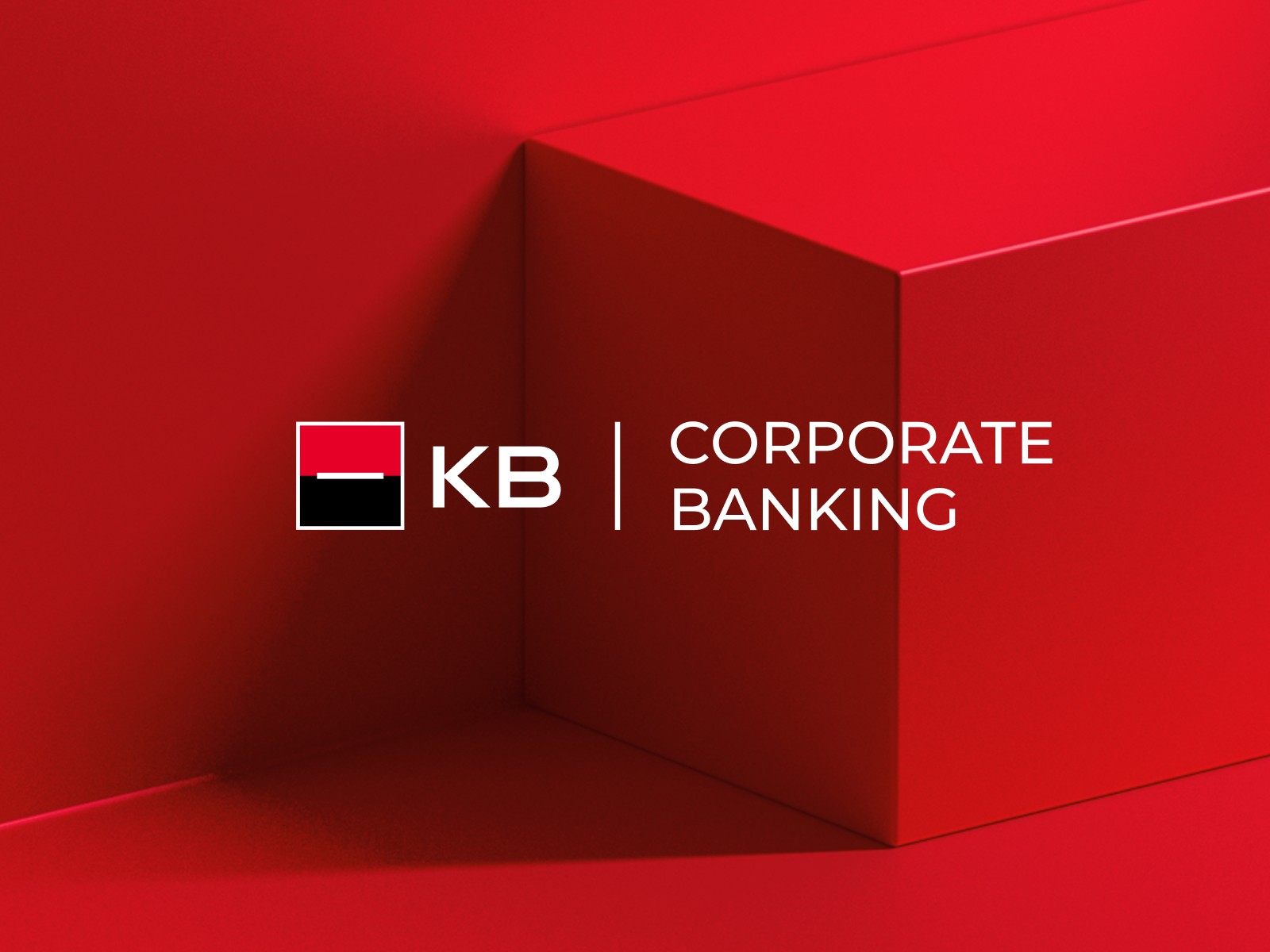

Discovery & Research
From the outset, our lean team—consisting of a Product Owner, a Service Designer, and me—prioritized deep product discovery and UX research. We conducted in-depth interviews with all board members and key tribe leaders, explored legacy channels, and engaged directly with users to map their needs and pain points. These insights were synthesized into personas and validated through card sorting exercises, which laid the groundwork for a robust information architecture.
Design Foundations
After six months of intensive discovery, I began sketching the first design patterns and establishing the core interaction principles for the web app. Early prototypes were iteratively refined based on stakeholder feedback, ensuring alignment with both user needs and business goals.
With the arrival of Lukas Pitter, a talented designer, we elevated the visual identity and branding of the platform. Together, we transformed our vision into a tangible roadmap and interactive prototype.
Discovery & Research
From the outset, our lean team—consisting of a Product Owner, a Service Designer, and me—prioritized deep product discovery and UX research. We conducted in-depth interviews with all board members and key tribe leaders, explored legacy channels, and engaged directly with users to map their needs and pain points. These insights were synthesized into personas and validated through card sorting exercises, which laid the groundwork for a robust information architecture.
Design Foundations
After six months of intensive discovery, I began sketching the first design patterns and establishing the core interaction principles for the web app. Early prototypes were iteratively refined based on stakeholder feedback, ensuring alignment with both user needs and business goals.
With the arrival of Lukas Pitter, a talented designer, we elevated the visual identity and branding of the platform. Together, we transformed our vision into a tangible roadmap and interactive prototype.
Discovery & Research
From the outset, our lean team—consisting of a Product Owner, a Service Designer, and me—prioritized deep product discovery and UX research. We conducted in-depth interviews with all board members and key tribe leaders, explored legacy channels, and engaged directly with users to map their needs and pain points. These insights were synthesized into personas and validated through card sorting exercises, which laid the groundwork for a robust information architecture.
Design Foundations
After six months of intensive discovery, I began sketching the first design patterns and establishing the core interaction principles for the web app. Early prototypes were iteratively refined based on stakeholder feedback, ensuring alignment with both user needs and business goals.
With the arrival of Lukas Pitter, a talented designer, we elevated the visual identity and branding of the platform. Together, we transformed our vision into a tangible roadmap and interactive prototype.
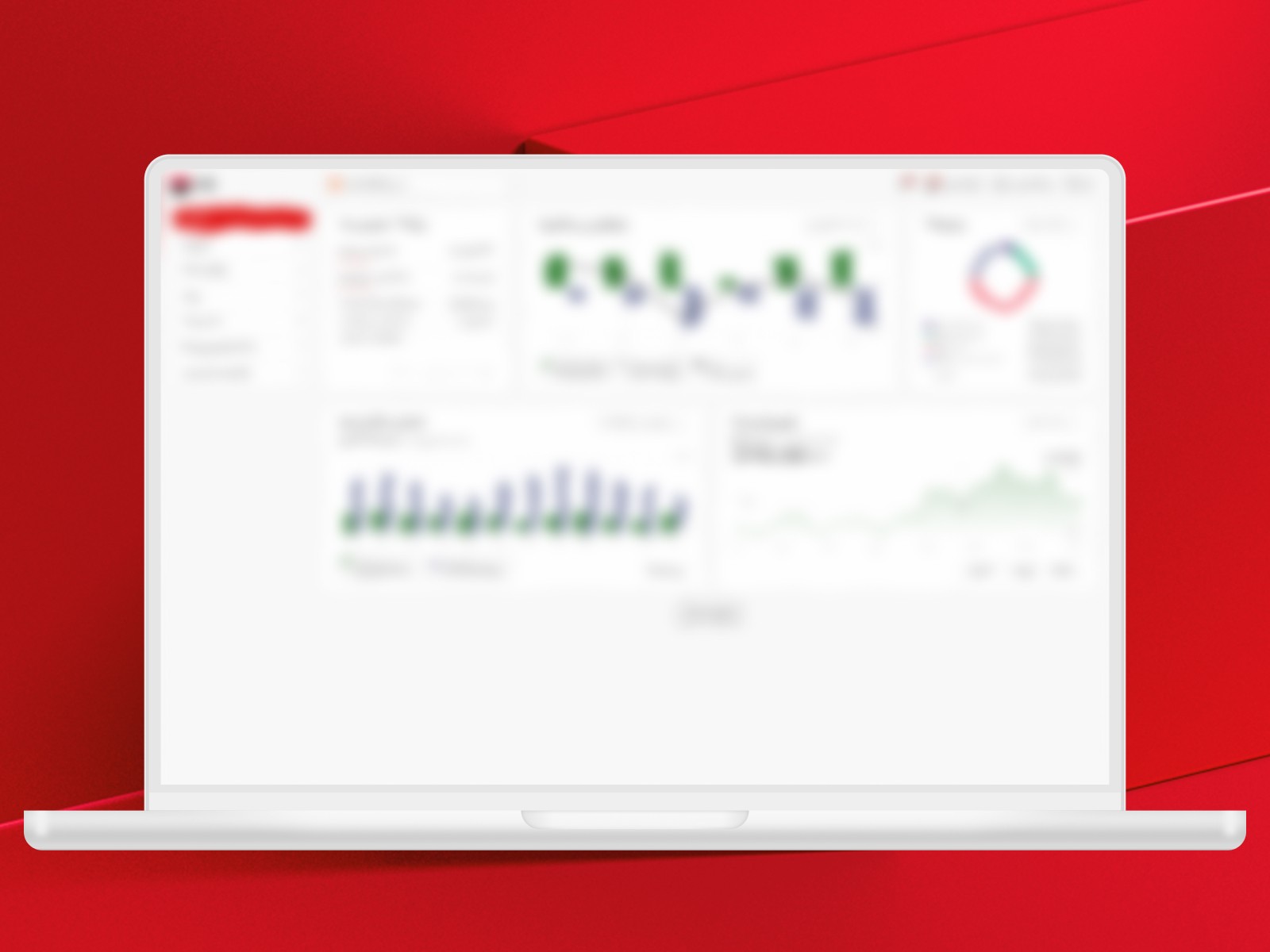

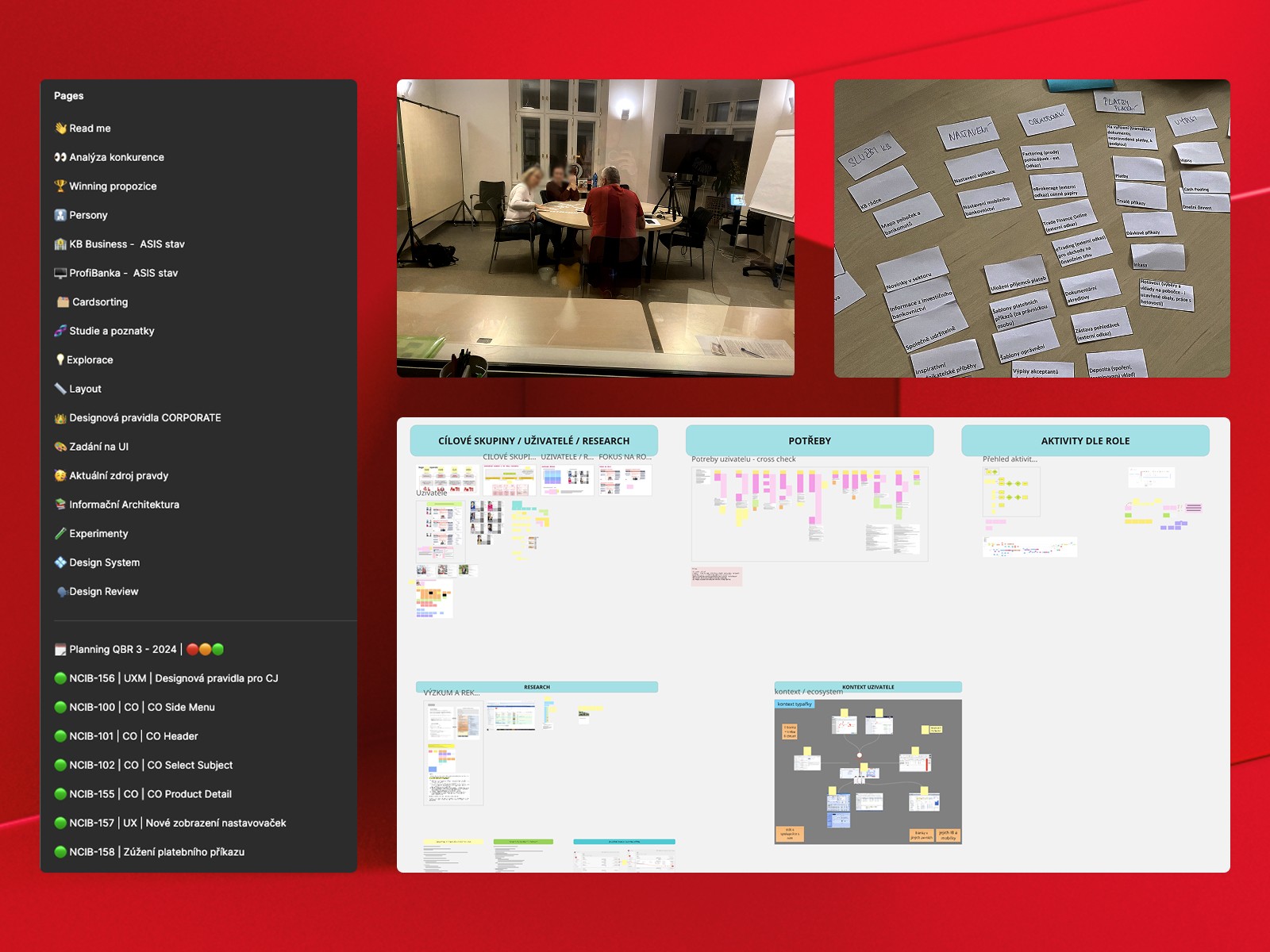

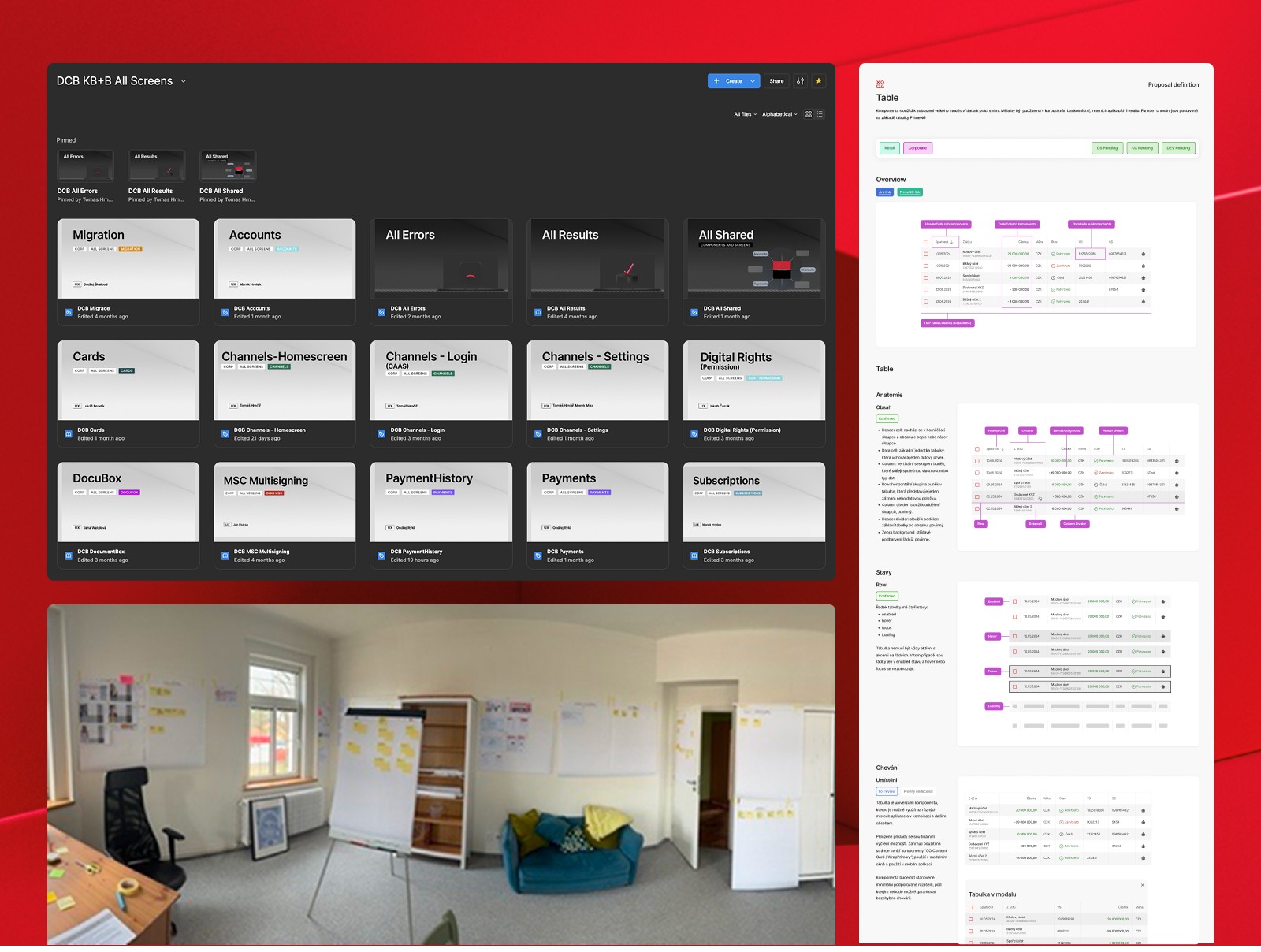

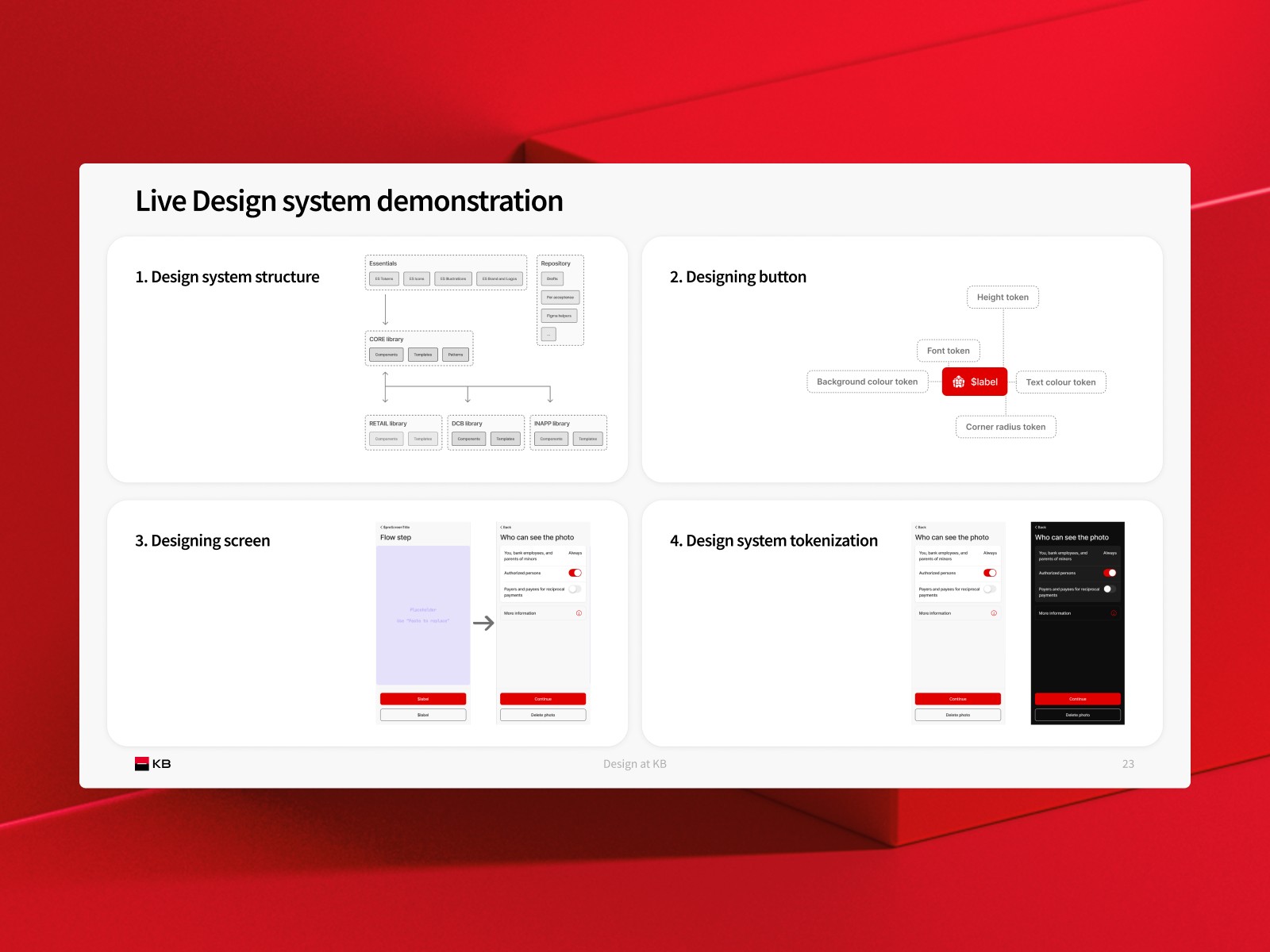

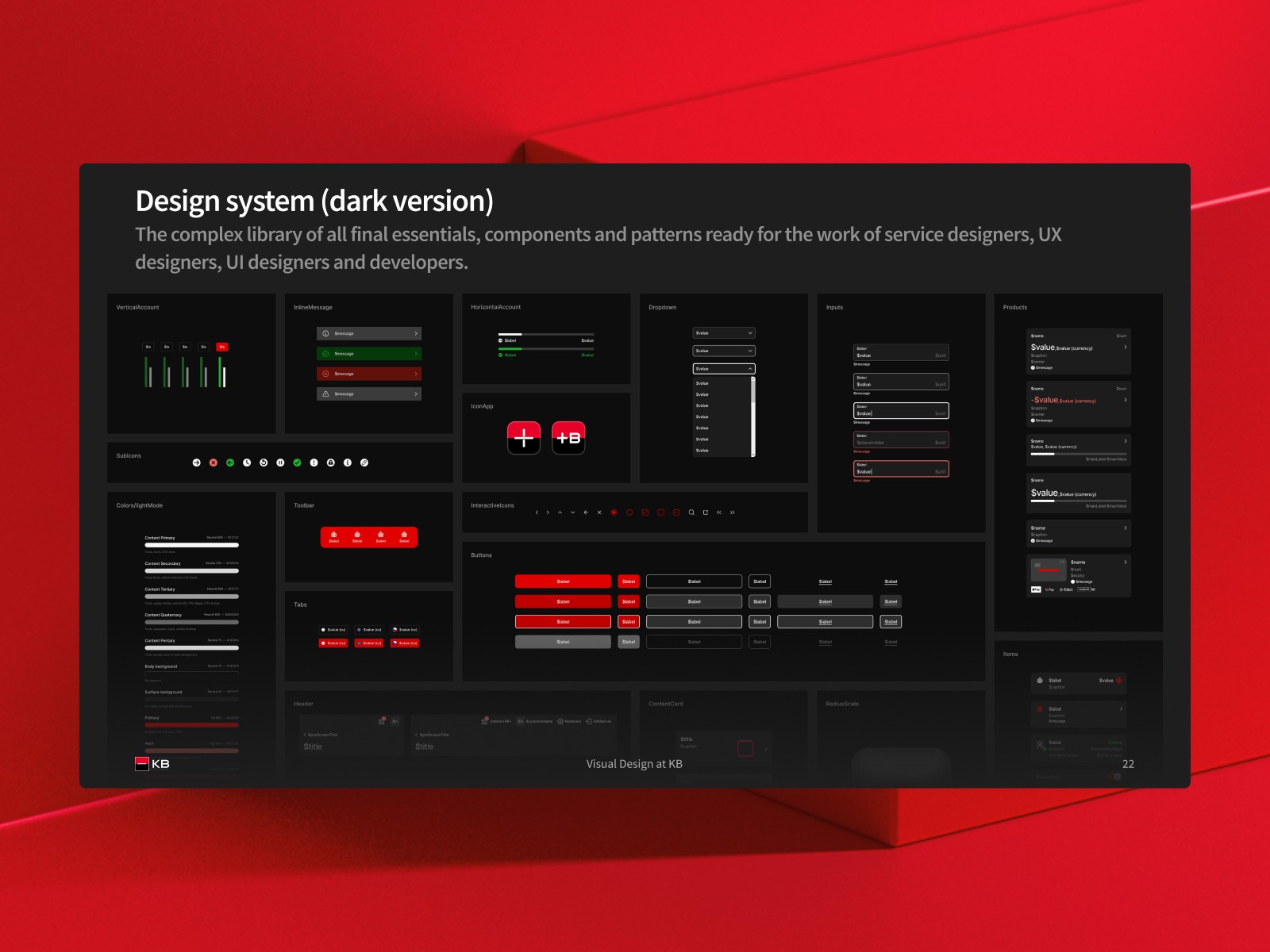

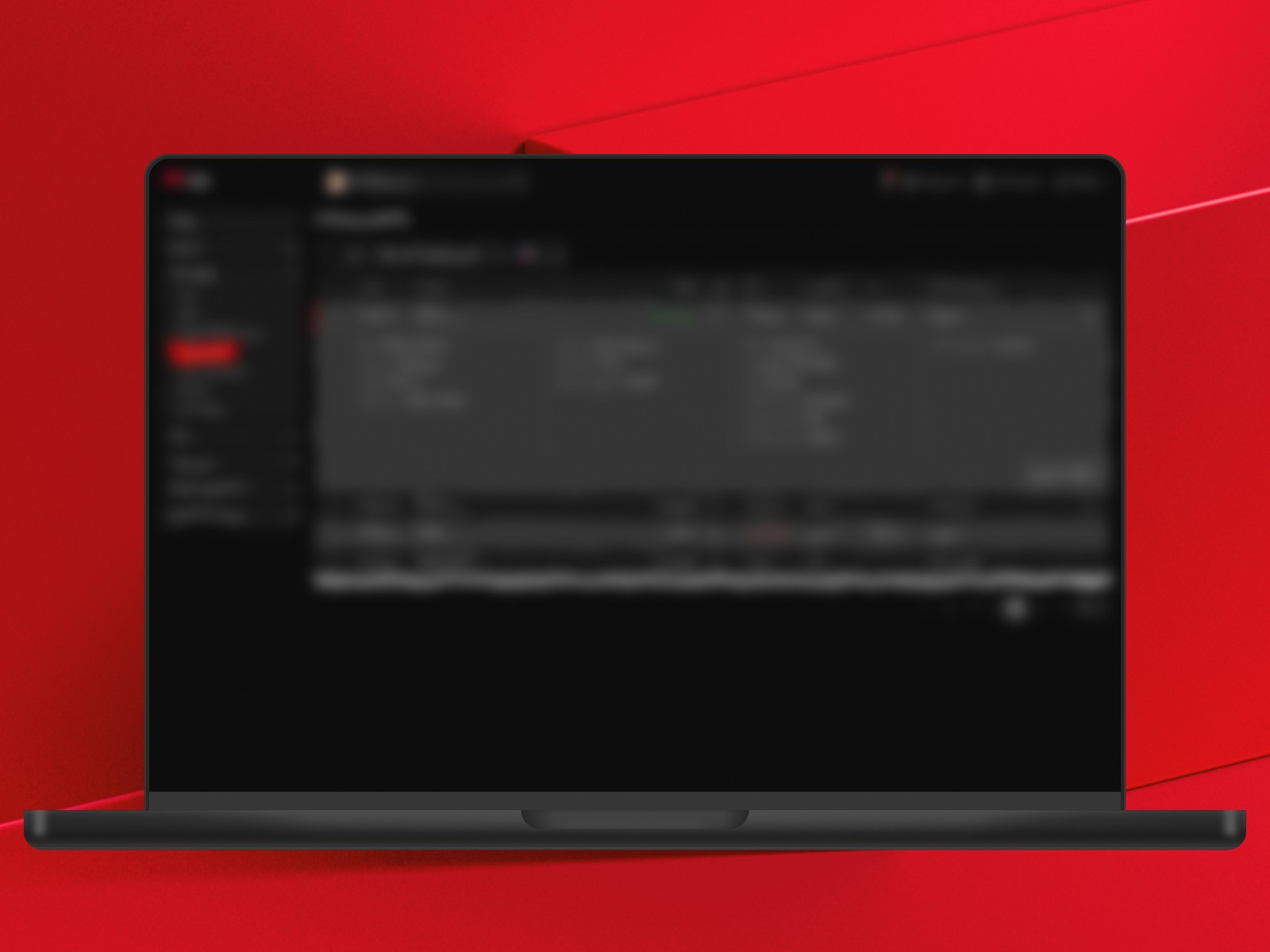

Scaling Design Across Teams
As the project gained momentum, my role evolved into design lead. I developed onboarding materials not just for designers, but for entire cross-functional teams—highlighting the distinct needs and behaviors of corporate versus retail users, which fundamentally shaped our product decisions.
I established foundational design guidelines covering:
Default resolutions and breakpoints
Information architecture and navigation patterns
Product detail interactions, pagination, and button hierarchy
Permission models and filtering logic
These principles were critical for maintaining consistency and quality as the project scaled to 26 independent development teams and over 40 designers. I created a “design cookbook” to empower teams while safeguarding the integrity of the user experience.
Collaboration & Impact
Supporting such a large, distributed team meant my focus shifted to coaching, coordination, and design reviews—spending about 70% of my time in meetings and workshops, while still contributing to core feature design. Our collaborative approach and attention to detail earned positive feedback from both the board and the broader design community.
Although the MVP was just two months from launch, the project was ultimately postponed due to cost-cutting measures. Despite this, the journey was transformative, both professionally and personally.
Key Learnings & Growth
This project taught me invaluable lessons about the intersection of business and design. I learned the importance of keeping stakeholders engaged and empowered, ensuring they felt ownership of the process. I honed my ability to listen, give and receive feedback, and support the growth of fellow designers.
On the technical side, I deepened my expertise in product design, visual hierarchy, and design systems, contributing to the creation of a new component library and branding branch for our design system.
Scaling Design Across Teams
As the project gained momentum, my role evolved into design lead. I developed onboarding materials not just for designers, but for entire cross-functional teams—highlighting the distinct needs and behaviors of corporate versus retail users, which fundamentally shaped our product decisions.
I established foundational design guidelines covering:
Default resolutions and breakpoints
Information architecture and navigation patterns
Product detail interactions, pagination, and button hierarchy
Permission models and filtering logic
These principles were critical for maintaining consistency and quality as the project scaled to 26 independent development teams and over 40 designers. I created a “design cookbook” to empower teams while safeguarding the integrity of the user experience.
Collaboration & Impact
Supporting such a large, distributed team meant my focus shifted to coaching, coordination, and design reviews—spending about 70% of my time in meetings and workshops, while still contributing to core feature design. Our collaborative approach and attention to detail earned positive feedback from both the board and the broader design community.
Although the MVP was just two months from launch, the project was ultimately postponed due to cost-cutting measures. Despite this, the journey was transformative, both professionally and personally.
Key Learnings & Growth
This project taught me invaluable lessons about the intersection of business and design. I learned the importance of keeping stakeholders engaged and empowered, ensuring they felt ownership of the process. I honed my ability to listen, give and receive feedback, and support the growth of fellow designers.
On the technical side, I deepened my expertise in product design, visual hierarchy, and design systems, contributing to the creation of a new component library and branding branch for our design system.
Scaling Design Across Teams
As the project gained momentum, my role evolved into design lead. I developed onboarding materials not just for designers, but for entire cross-functional teams—highlighting the distinct needs and behaviors of corporate versus retail users, which fundamentally shaped our product decisions.
I established foundational design guidelines covering:
Default resolutions and breakpoints
Information architecture and navigation patterns
Product detail interactions, pagination, and button hierarchy
Permission models and filtering logic
These principles were critical for maintaining consistency and quality as the project scaled to 26 independent development teams and over 40 designers. I created a “design cookbook” to empower teams while safeguarding the integrity of the user experience.
Collaboration & Impact
Supporting such a large, distributed team meant my focus shifted to coaching, coordination, and design reviews—spending about 70% of my time in meetings and workshops, while still contributing to core feature design. Our collaborative approach and attention to detail earned positive feedback from both the board and the broader design community.
Although the MVP was just two months from launch, the project was ultimately postponed due to cost-cutting measures. Despite this, the journey was transformative, both professionally and personally.
Key Learnings & Growth
This project taught me invaluable lessons about the intersection of business and design. I learned the importance of keeping stakeholders engaged and empowered, ensuring they felt ownership of the process. I honed my ability to listen, give and receive feedback, and support the growth of fellow designers.
On the technical side, I deepened my expertise in product design, visual hierarchy, and design systems, contributing to the creation of a new component library and branding branch for our design system.
Projects
Other Projects
Other Projects
Reach out anytime
Let’s Stay Connected
Have an idea, a question, or just want to talk about design? I’m always happy to connect—whether it’s about a new project or just a good conversation.
Reach out anytime
Let’s Stay Connected
Have an idea, a question, or just want to talk about design? I’m always happy to connect—whether it’s about a new project or just a good conversation.
Reach out anytime
Let’s Stay Connected
Have an idea, a question, or just want to talk about design? I’m always happy to connect—whether it’s about a new project or just a good conversation.
KB+ Business
As the first designer on the project, I had the unique opportunity to shape the digital experience for the most critical business—responsible for over 60% of the group’s revenue. Project is still unannounced, so the images are blurred.
Services
Product Design, Strategy, Leadership, Mentoring, Product Discovery, UX Research, Prototyping & Wireframing, Design Systems
Services
Product Design, Strategy, Leadership, Mentoring, Product Discovery, UX Research, Prototyping & Wireframing, Design Systems
Services
Product Design, Strategy, Leadership, Mentoring, Product Discovery, UX Research, Prototyping & Wireframing, Design Systems
Tools
Figma, Sketch, UML, Miro, Jira, Confluence
Tools
Figma, Sketch, UML, Miro, Jira, Confluence
Tools
Figma, Sketch, UML, Miro, Jira, Confluence
Value
Scalable, Efficient, Flat architecture
Value
Scalable, Efficient, Flat architecture
Value
Scalable, Efficient, Flat architecture
Timeline
1 yeah 6 months
Timeline
1 yeah 6 months
Timeline
1 yeah 6 months


Discovery & Research
From the outset, our lean team—consisting of a Product Owner, a Service Designer, and me—prioritized deep product discovery and UX research. We conducted in-depth interviews with all board members and key tribe leaders, explored legacy channels, and engaged directly with users to map their needs and pain points. These insights were synthesized into personas and validated through card sorting exercises, which laid the groundwork for a robust information architecture.
Design Foundations
After six months of intensive discovery, I began sketching the first design patterns and establishing the core interaction principles for the web app. Early prototypes were iteratively refined based on stakeholder feedback, ensuring alignment with both user needs and business goals.
With the arrival of Lukas Pitter, a talented designer, we elevated the visual identity and branding of the platform. Together, we transformed our vision into a tangible roadmap and interactive prototype.
Discovery & Research
From the outset, our lean team—consisting of a Product Owner, a Service Designer, and me—prioritized deep product discovery and UX research. We conducted in-depth interviews with all board members and key tribe leaders, explored legacy channels, and engaged directly with users to map their needs and pain points. These insights were synthesized into personas and validated through card sorting exercises, which laid the groundwork for a robust information architecture.
Design Foundations
After six months of intensive discovery, I began sketching the first design patterns and establishing the core interaction principles for the web app. Early prototypes were iteratively refined based on stakeholder feedback, ensuring alignment with both user needs and business goals.
With the arrival of Lukas Pitter, a talented designer, we elevated the visual identity and branding of the platform. Together, we transformed our vision into a tangible roadmap and interactive prototype.
Discovery & Research
From the outset, our lean team—consisting of a Product Owner, a Service Designer, and me—prioritized deep product discovery and UX research. We conducted in-depth interviews with all board members and key tribe leaders, explored legacy channels, and engaged directly with users to map their needs and pain points. These insights were synthesized into personas and validated through card sorting exercises, which laid the groundwork for a robust information architecture.
Design Foundations
After six months of intensive discovery, I began sketching the first design patterns and establishing the core interaction principles for the web app. Early prototypes were iteratively refined based on stakeholder feedback, ensuring alignment with both user needs and business goals.
With the arrival of Lukas Pitter, a talented designer, we elevated the visual identity and branding of the platform. Together, we transformed our vision into a tangible roadmap and interactive prototype.












Scaling Design Across Teams
As the project gained momentum, my role evolved into design lead. I developed onboarding materials not just for designers, but for entire cross-functional teams—highlighting the distinct needs and behaviors of corporate versus retail users, which fundamentally shaped our product decisions.
I established foundational design guidelines covering:
Default resolutions and breakpoints
Information architecture and navigation patterns
Product detail interactions, pagination, and button hierarchy
Permission models and filtering logic
These principles were critical for maintaining consistency and quality as the project scaled to 26 independent development teams and over 40 designers. I created a “design cookbook” to empower teams while safeguarding the integrity of the user experience.
Collaboration & Impact
Supporting such a large, distributed team meant my focus shifted to coaching, coordination, and design reviews—spending about 70% of my time in meetings and workshops, while still contributing to core feature design. Our collaborative approach and attention to detail earned positive feedback from both the board and the broader design community.
Although the MVP was just two months from launch, the project was ultimately postponed due to cost-cutting measures. Despite this, the journey was transformative, both professionally and personally.
Key Learnings & Growth
This project taught me invaluable lessons about the intersection of business and design. I learned the importance of keeping stakeholders engaged and empowered, ensuring they felt ownership of the process. I honed my ability to listen, give and receive feedback, and support the growth of fellow designers.
On the technical side, I deepened my expertise in product design, visual hierarchy, and design systems, contributing to the creation of a new component library and branding branch for our design system.
Scaling Design Across Teams
As the project gained momentum, my role evolved into design lead. I developed onboarding materials not just for designers, but for entire cross-functional teams—highlighting the distinct needs and behaviors of corporate versus retail users, which fundamentally shaped our product decisions.
I established foundational design guidelines covering:
Default resolutions and breakpoints
Information architecture and navigation patterns
Product detail interactions, pagination, and button hierarchy
Permission models and filtering logic
These principles were critical for maintaining consistency and quality as the project scaled to 26 independent development teams and over 40 designers. I created a “design cookbook” to empower teams while safeguarding the integrity of the user experience.
Collaboration & Impact
Supporting such a large, distributed team meant my focus shifted to coaching, coordination, and design reviews—spending about 70% of my time in meetings and workshops, while still contributing to core feature design. Our collaborative approach and attention to detail earned positive feedback from both the board and the broader design community.
Although the MVP was just two months from launch, the project was ultimately postponed due to cost-cutting measures. Despite this, the journey was transformative, both professionally and personally.
Key Learnings & Growth
This project taught me invaluable lessons about the intersection of business and design. I learned the importance of keeping stakeholders engaged and empowered, ensuring they felt ownership of the process. I honed my ability to listen, give and receive feedback, and support the growth of fellow designers.
On the technical side, I deepened my expertise in product design, visual hierarchy, and design systems, contributing to the creation of a new component library and branding branch for our design system.
Scaling Design Across Teams
As the project gained momentum, my role evolved into design lead. I developed onboarding materials not just for designers, but for entire cross-functional teams—highlighting the distinct needs and behaviors of corporate versus retail users, which fundamentally shaped our product decisions.
I established foundational design guidelines covering:
Default resolutions and breakpoints
Information architecture and navigation patterns
Product detail interactions, pagination, and button hierarchy
Permission models and filtering logic
These principles were critical for maintaining consistency and quality as the project scaled to 26 independent development teams and over 40 designers. I created a “design cookbook” to empower teams while safeguarding the integrity of the user experience.
Collaboration & Impact
Supporting such a large, distributed team meant my focus shifted to coaching, coordination, and design reviews—spending about 70% of my time in meetings and workshops, while still contributing to core feature design. Our collaborative approach and attention to detail earned positive feedback from both the board and the broader design community.
Although the MVP was just two months from launch, the project was ultimately postponed due to cost-cutting measures. Despite this, the journey was transformative, both professionally and personally.
Key Learnings & Growth
This project taught me invaluable lessons about the intersection of business and design. I learned the importance of keeping stakeholders engaged and empowered, ensuring they felt ownership of the process. I honed my ability to listen, give and receive feedback, and support the growth of fellow designers.
On the technical side, I deepened my expertise in product design, visual hierarchy, and design systems, contributing to the creation of a new component library and branding branch for our design system.
Projects
Other Projects
Other Projects
Reach out anytime
Let’s Stay Connected
Have an idea, a question, or just want to talk about design? I’m always happy to connect—whether it’s about a new project or just a good conversation.
Reach out anytime
Let’s Stay Connected
Have an idea, a question, or just want to talk about design? I’m always happy to connect—whether it’s about a new project or just a good conversation.
Reach out anytime
Let’s Stay Connected
Have an idea, a question, or just want to talk about design? I’m always happy to connect—whether it’s about a new project or just a good conversation.
KB+ Business
As the first designer on the project, I had the unique opportunity to shape the digital experience for the most critical business—responsible for over 60% of the group’s revenue. Project is still unannounced, so the images are blurred.
Services
Product Design, Strategy, Leadership, Mentoring, Product Discovery, UX Research, Prototyping & Wireframing, Design Systems
Services
Product Design, Strategy, Leadership, Mentoring, Product Discovery, UX Research, Prototyping & Wireframing, Design Systems
Services
Product Design, Strategy, Leadership, Mentoring, Product Discovery, UX Research, Prototyping & Wireframing, Design Systems
Tools
Figma, Sketch, UML, Miro, Jira, Confluence
Tools
Figma, Sketch, UML, Miro, Jira, Confluence
Tools
Figma, Sketch, UML, Miro, Jira, Confluence
Value
Scalable, Efficient, Flat architecture
Value
Scalable, Efficient, Flat architecture
Value
Scalable, Efficient, Flat architecture
Timeline
1 yeah 6 months
Timeline
1 yeah 6 months
Timeline
1 yeah 6 months


Discovery & Research
From the outset, our lean team—consisting of a Product Owner, a Service Designer, and me—prioritized deep product discovery and UX research. We conducted in-depth interviews with all board members and key tribe leaders, explored legacy channels, and engaged directly with users to map their needs and pain points. These insights were synthesized into personas and validated through card sorting exercises, which laid the groundwork for a robust information architecture.
Design Foundations
After six months of intensive discovery, I began sketching the first design patterns and establishing the core interaction principles for the web app. Early prototypes were iteratively refined based on stakeholder feedback, ensuring alignment with both user needs and business goals.
With the arrival of Lukas Pitter, a talented designer, we elevated the visual identity and branding of the platform. Together, we transformed our vision into a tangible roadmap and interactive prototype.
Discovery & Research
From the outset, our lean team—consisting of a Product Owner, a Service Designer, and me—prioritized deep product discovery and UX research. We conducted in-depth interviews with all board members and key tribe leaders, explored legacy channels, and engaged directly with users to map their needs and pain points. These insights were synthesized into personas and validated through card sorting exercises, which laid the groundwork for a robust information architecture.
Design Foundations
After six months of intensive discovery, I began sketching the first design patterns and establishing the core interaction principles for the web app. Early prototypes were iteratively refined based on stakeholder feedback, ensuring alignment with both user needs and business goals.
With the arrival of Lukas Pitter, a talented designer, we elevated the visual identity and branding of the platform. Together, we transformed our vision into a tangible roadmap and interactive prototype.
Discovery & Research
From the outset, our lean team—consisting of a Product Owner, a Service Designer, and me—prioritized deep product discovery and UX research. We conducted in-depth interviews with all board members and key tribe leaders, explored legacy channels, and engaged directly with users to map their needs and pain points. These insights were synthesized into personas and validated through card sorting exercises, which laid the groundwork for a robust information architecture.
Design Foundations
After six months of intensive discovery, I began sketching the first design patterns and establishing the core interaction principles for the web app. Early prototypes were iteratively refined based on stakeholder feedback, ensuring alignment with both user needs and business goals.
With the arrival of Lukas Pitter, a talented designer, we elevated the visual identity and branding of the platform. Together, we transformed our vision into a tangible roadmap and interactive prototype.












Scaling Design Across Teams
As the project gained momentum, my role evolved into design lead. I developed onboarding materials not just for designers, but for entire cross-functional teams—highlighting the distinct needs and behaviors of corporate versus retail users, which fundamentally shaped our product decisions.
I established foundational design guidelines covering:
Default resolutions and breakpoints
Information architecture and navigation patterns
Product detail interactions, pagination, and button hierarchy
Permission models and filtering logic
These principles were critical for maintaining consistency and quality as the project scaled to 26 independent development teams and over 40 designers. I created a “design cookbook” to empower teams while safeguarding the integrity of the user experience.
Collaboration & Impact
Supporting such a large, distributed team meant my focus shifted to coaching, coordination, and design reviews—spending about 70% of my time in meetings and workshops, while still contributing to core feature design. Our collaborative approach and attention to detail earned positive feedback from both the board and the broader design community.
Although the MVP was just two months from launch, the project was ultimately postponed due to cost-cutting measures. Despite this, the journey was transformative, both professionally and personally.
Key Learnings & Growth
This project taught me invaluable lessons about the intersection of business and design. I learned the importance of keeping stakeholders engaged and empowered, ensuring they felt ownership of the process. I honed my ability to listen, give and receive feedback, and support the growth of fellow designers.
On the technical side, I deepened my expertise in product design, visual hierarchy, and design systems, contributing to the creation of a new component library and branding branch for our design system.
Scaling Design Across Teams
As the project gained momentum, my role evolved into design lead. I developed onboarding materials not just for designers, but for entire cross-functional teams—highlighting the distinct needs and behaviors of corporate versus retail users, which fundamentally shaped our product decisions.
I established foundational design guidelines covering:
Default resolutions and breakpoints
Information architecture and navigation patterns
Product detail interactions, pagination, and button hierarchy
Permission models and filtering logic
These principles were critical for maintaining consistency and quality as the project scaled to 26 independent development teams and over 40 designers. I created a “design cookbook” to empower teams while safeguarding the integrity of the user experience.
Collaboration & Impact
Supporting such a large, distributed team meant my focus shifted to coaching, coordination, and design reviews—spending about 70% of my time in meetings and workshops, while still contributing to core feature design. Our collaborative approach and attention to detail earned positive feedback from both the board and the broader design community.
Although the MVP was just two months from launch, the project was ultimately postponed due to cost-cutting measures. Despite this, the journey was transformative, both professionally and personally.
Key Learnings & Growth
This project taught me invaluable lessons about the intersection of business and design. I learned the importance of keeping stakeholders engaged and empowered, ensuring they felt ownership of the process. I honed my ability to listen, give and receive feedback, and support the growth of fellow designers.
On the technical side, I deepened my expertise in product design, visual hierarchy, and design systems, contributing to the creation of a new component library and branding branch for our design system.
Scaling Design Across Teams
As the project gained momentum, my role evolved into design lead. I developed onboarding materials not just for designers, but for entire cross-functional teams—highlighting the distinct needs and behaviors of corporate versus retail users, which fundamentally shaped our product decisions.
I established foundational design guidelines covering:
Default resolutions and breakpoints
Information architecture and navigation patterns
Product detail interactions, pagination, and button hierarchy
Permission models and filtering logic
These principles were critical for maintaining consistency and quality as the project scaled to 26 independent development teams and over 40 designers. I created a “design cookbook” to empower teams while safeguarding the integrity of the user experience.
Collaboration & Impact
Supporting such a large, distributed team meant my focus shifted to coaching, coordination, and design reviews—spending about 70% of my time in meetings and workshops, while still contributing to core feature design. Our collaborative approach and attention to detail earned positive feedback from both the board and the broader design community.
Although the MVP was just two months from launch, the project was ultimately postponed due to cost-cutting measures. Despite this, the journey was transformative, both professionally and personally.
Key Learnings & Growth
This project taught me invaluable lessons about the intersection of business and design. I learned the importance of keeping stakeholders engaged and empowered, ensuring they felt ownership of the process. I honed my ability to listen, give and receive feedback, and support the growth of fellow designers.
On the technical side, I deepened my expertise in product design, visual hierarchy, and design systems, contributing to the creation of a new component library and branding branch for our design system.
Projects
Other Projects
Other Projects
Reach out anytime
Let’s Stay Connected
Have an idea, a question, or just want to talk about design? I’m always happy to connect—whether it’s about a new project or just a good conversation.
Reach out anytime
Let’s Stay Connected
Have an idea, a question, or just want to talk about design? I’m always happy to connect—whether it’s about a new project or just a good conversation.
Reach out anytime
Let’s Stay Connected
Have an idea, a question, or just want to talk about design? I’m always happy to connect—whether it’s about a new project or just a good conversation.
